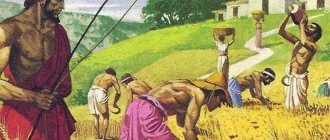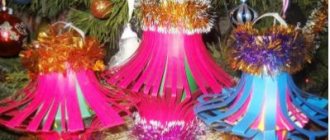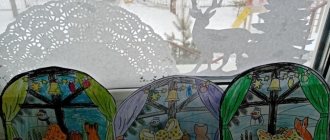Minaenko Tatyana Sergeevna
Lesson summary for the preparatory group “Our Motherland - Russia”
Notes in the preparatory group on the topic : “ Our Motherland-Russia ”
Form of GCD: game - journey
Goal: To develop in children a sense of patriotism and love for their Motherland .
Tasks:
Educational:
Systematize children's knowledge about Russia . To consolidate children's knowledge about Moscow - the capital of Russia , about state symbols: the coat of arms and anthem, the flag of the Russian Federation (about the meaning of the colors of the Russian flag )
.
To clarify children’s ideas about the head of the Russian state , the President of the Russian Federation.
Correctional and developmental:
Develop attention, memory, ability to conduct dialogue, maintain a casual conversation.
Activate children's vocabulary: capital, Russians , Motherland , Russia , flag, coat of arms, anthem, Moscow, president.
Educational:
To educate: patriotic feelings towards one’s country and native land, respect for the state symbols of Russia .
Materials:
Globe, map of Russia , images of the President of the Russian Federation, coat of arms and flag, presentation of the sights of the village of Kagalnik.
Preliminary work:
Conversations on the topic “ Our country is Russia ”
,
“The main city of our country”
, conversations about
Russian symbols ; reading poems, proverbs and sayings about the Motherland ; looking at the globe and photographs.
My country. Lesson in a preparatory group
Lesson in the preparatory group “My Country”.
Goal:
To deepen and clarify ideas about the homeland.
objectives :
continue to consolidate children’s knowledge about Russia, about its capital, Moscow;
introduce Russian symbols. Educational:
to cultivate love for the Motherland and respect for people of different nationalities.
Developmental:
develop thinking, memory.
Equipment:
subject pictures depicting Russian symbols, an audio recording of the Russian anthem, pictures depicting several views of Moscow (Red Square, Bolshoi Theater, Cathedral of Christ the Savior, etc.), colored strips of paper in red, blue and white, an image of the Russian flag and other countries (2-4 countries)
Lesson progress:
- Guys, what is the name of our country?
(Russia) - What are the people of Russia called? (Russians). - Let's look at our globe to see what a large, vast area Russia occupies. — What can we tell about our country? Invite children to name the symbols of the Russian state (flag, coat of arms) that are presented in the subject pictures. Invite the children to stand up and play the recording of the Russian anthem. The anthem is also a symbol of the Russian state. We talk about our country based on subject pictures. The country we live in is called Russia. Russia is a state. It has its own symbols, you have already named them. You should be proud of the symbols of the country. The Russian anthem is always played at ceremonial events when awards are given to Russians for their achievements. Whenever the anthem is played, you must stand and listen to it while standing. Our country is led by a president (show a photo of the president and memorize his last name, first name, patronymic). There are many cities, forests, rivers and lakes in our country. Forests, rivers, lakes are the wealth of our country. Russia is the biggest country in the world. Russia is our Motherland. — Guys, I wanted to show our flag, but the problem is, I mixed up all the flags, help me choose the Russian flag. - Right. How did you find him? (Russia has a tricolor flag, three stripes - white, blue, red.) -What do they mean? (White is the color of peace, it says that our country is peace-loving. Blue is faith. Red is the color of strength, it symbolizes the blood shed for our Motherland). — Now, let's look at the coat of arms of Russia. What can you tell about him (the coat of arms depicts an eagle, which denotes the strength of the state, an eagle with two heads and raised wings; he has a crown on his head, in one paw he holds a ball - this is a power, and in the other - a rod - this is a scepter ) . - Why does the eagle have two heads (the Russian state is large, and the heads look west and east, showing that it is one). Physical education minute.
Every country has a main city. The main city of the country is called the capital. — Which city is the capital of Russia? (Moscow) Show children pictures depicting several views of Moscow (Red Square, Bolshoi Theater, etc.) and talk about its main attractions, practice subject vocabulary: the Kremlin, chimes, temple, Bolshoi Theater, Red Square. Russia is a state in which people of different nationalities live. It is called a multinational state. People of different nationalities live together, some nationalities have their own republics, for example Tatarstan, Chechnya, Dagestan, Karachay-Cherkessia, Kalmykia, etc. The majority of the population of Russia is Russian. All peoples of Russia have one state language – Russian. People of different nationalities should live together and respect each other. Every person loves his country, protects it from enemies, and protects its wealth. When you grow up, you will also defend your homeland. People call their homeland not only their country, but also their home, kindergarten, school, city, region. At the end of the conversation, read Zykova’s passage “Motherland” to the children. A dear home, familiar from childhood, Where granny puts the dough; The school where my brother studied; My favorite kindergarten; All my friends, girlfriends, Sleds, balls, toys, Mom, dad, brother and me - This is my Motherland!
Integrated lesson in the preparatory group “Our Motherland - Russia”
- August 22, 2010
Competition “My Pedagogical Initiative”
Lesson objectives:
- give children an idea of their homeland - Russia, its capital;
- cultivate love for one’s homeland, a sense of pride in one’s country;
- consolidate and generalize knowledge about the symbols of our state;
- develop children's ability to navigate the globe;
- consolidate knowledge of the seasons, months, days of the week;
- consolidate knowledge of counting, orientation in space and time;
- consolidate knowledge of the alphabet, knowledge of vowels and consonants, composing words;
- develop constructive skills and skills in working with paper;
- cultivate independence and accuracy.
Materials and equipment: Globe, flag, coat of arms of Russia, riddles about the seasons, poster with modes of transport, alphabet on a magnetic board, colored paper, half a sheet of A4 white paper, rectangle template, plasticine, PVA glue, brush, napkin, scissors, simple pencil.
Progress of the lesson
Educator: Hello, let's prepare for the lesson, let's hold hands, look at each other and smile. Is everyone in a good mood? Let's do gymnastics for our eyes (gymnastics for the eyes).
Educator: Today we will talk about our homeland. Tell me, please, what is the name of the country in which we live?
Children: Russia.
Educator: What can you say about our country? What city is the capital of our homeland? What language is spoken in Russia? Name the president of our country? The children answer. The teacher puts a globe on the table.
Educator: Please tell me, what is this?
Children : Globe, planet Earth.
Educator: Yes, this planet Earth on which we live, it revolves around the Sun, and one revolution around the sun means a year. How many seasons do you know?
Children : Four.
Educator: Let me tell you riddles about the seasons, and you will guess.
I dress rivers in ice, I whiten fields and houses. And my name is... (Winter).
I open the buds into green leaves, I dress the trees, I water the crops, I am full of movement, My name is... (Spring).
I am woven from the heat, I carry warmth with me, I warm the rivers, Swim - I invite you! And you all love me for this, I... (Summer).
I bring the harvests, I sow the fields again, I send the birds to the south, I strip the trees, But without touching the pines and fir trees, I... (Autumn).
Educator: They answered correctly, well done, and now tell me the months of summer, winter, autumn, spring. The children answer.
Educator: Now tell me, what does a month consist of?
Children : From weeks.
Educator: Tell me the days of the week. The children answer.
Educator: Well done, you answered everything correctly. Let's look on the globe what our country looks like, tell me what is indicated on the globe in green, blue, brown, yellow, white? The children answer.
Educator: That's right - forests, rivers, mountains, deserts, glaciers. Look how huge our country is. Listen to a poem about our homeland:
How big is my land, How wide are the open spaces, Lakes, rivers and fields, Forests and steppes, and mountains. My country stretches from north to south. When in one region it is spring, in the other there is snow and blizzard.
This is how huge our country is, and in order to quickly get from one corner of our country to another, people have come up with various types of transport. Tell me, what types of transport do you know? That's right: air, ground, water. Show me on the poster what types of transport are depicted here.
Children take turns showing different types of transport.
Educator: Now let's stand in a circle and play.
Math questions:
- counting to 10 and back;
- neighboring numbers;
- geometric figures;
- orientation in space and time;
- how many paws does a dog have;
- how many hands does a person have, etc.
Educator: Now go to the tables, look at the board, what do you see?
Children : Letters - alphabet.
Educator: What kind of letters are there?
Children : Vowels and consonants.
Educator: Transfer the vowels to the magnetic board. Let's remember what we talked about at the beginning of the lesson. We talked about the Motherland. Please, who wants to write this word? What else would you like to write? Children go out and write words.
Educator: Well done, well done, now let's do gymnastics.
Fizminutka:
We breathe deeply through our nose, we rise easily (squats), we bend forward, we bend back. Just as the wind bends the trees, so we sway in harmony (leaning back and forth). Now let’s turn our heads, so we’ll think better. Turn and turn, And then vice versa (rotate your head to the sides). Children stand on their toes (stretching - arms up), We put a point on exercises - We sit down on the chairs.
Educator: Today we will make the main symbol of our homeland - the flag of Russia. What colors does the symbol of our homeland consist of?
Children : White, blue, red.
Educator: Let's remember what the colors from which our flag is made mean.
Children : White means peace and purity of conscience, blue means sky, loyalty and truth, red means fire and courage. The teacher shows the flag making process.
Educator: Let's get our hands ready for work.
Finger gymnastics:
We chop and chop cabbage. We are three carrots, three. We salt the cabbage, salt it. We press and press cabbage.
The children begin to work, and at the end of the work the teacher sums up the results.
Author: Marina Vladimirovna Pismak, teacher of the second qualification category of the MDOU "Beloyarsk kindergarten" in the village of Bely Yar, Achinsk district, Krasnoyarsk Territory, work experience in the specialty - 11 years.
About the author: Marina Vladimirovna took an active part in organizing and conducting regional and all-Russian pedagogical competitions. She was awarded certificates for her teaching activities.
Photo by the author summer



